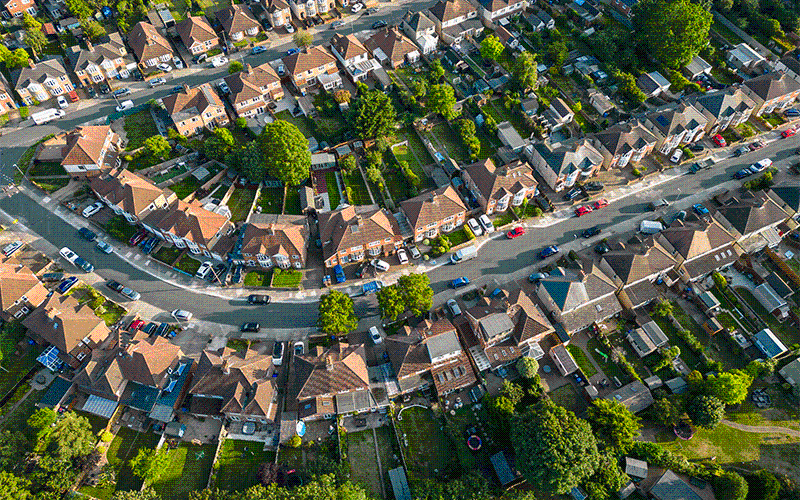
Building 1.5 Million Homes Without Environmental Harm: The Environmental Audit Committee Verdict
Witnesses, including experts in urban planning and sustainability, testified to the possibility of achieving this goal if proper measures are implemented.
This inquiry addresses a critical challenge: balancing the demand for housing with the urgent need to protect and enhance the environment. It aligns with growing public and professional calls to ensure that new developments do not exacerbate biodiversity loss, climate change, or urban sprawl.
The Association’s Viewpoint
The landscaping industry is uniquely positioned to contribute to this discussion, emphasising the need for integrated and sustainable approaches to housing development. We believe that achieving the housing target without environmental harm requires prioritising green infrastructure and thoughtful landscape design.
1. The Role of Landscaping in Sustainable Housing
Our members highlight the critical role of green spaces, not only as aesthetic features but as functional elements that promote biodiversity, manage water runoff, reduce urban heat islands, and improve air quality. Well-designed landscapes can transform new housing developments into thriving, liveable communities while mitigating their environmental impact.
The Association has consistently advocated for mandatory inclusion of robust landscaping budgets in housing projects. This ensures the creation of parks, gardens, and green corridors that benefit both residents and local ecosystems. The Association also emphasises the importance of proper soil management and native planting in development plans, both of which are critical for biodiversity and long-term sustainability.
2. Biodiversity Net Gain (BNG) and Housing Developments
The introduction of Biodiversity Net Gain legislation has provided a structured framework for improving habitats as part of development projects. The Association supports this initiative, but caution that achieving meaningful BNG requires input from trained landscaping professionals to ensure that designs are ecologically sound and practical to implement.
The Association has been advocating for collaboration between developers, ecologists, and landscape designers, architects and contractors to maximise the environmental benefits of BNG, ensuring that projects not only meet legislative requirements but also contribute to the UK's broader environmental goals.
3. Investing in Green Skills
For housing developments to be both environmentally sustainable and successful, we have seen the landscaping industry stress the importance of investing in the workforce. Green skills, including expertise in tree planting, habitat restoration, and sustainable design, are essential to delivering projects that align with the EAC's vision.
The Association is calling for government support to train and upskill workers in the landscaping sector, ensuring a robust pipeline of skilled professionals ready to tackle the demands of large-scale, environmentally conscious housing projects.
4. Community Well-being and Social Value
Our members and wider industry underscores the social value of integrating green spaces into housing developments. Accessible and well-maintained green areas promote physical and mental health, encourage community interaction, and enhance the overall quality of life. These outcomes align with the Government's objectives of creating healthy and sustainable communities.
Challenges and Recommendations
While the potential to build 1.5 million homes without environmental harm exists, several challenges remain. For instance:
- Policy Alignment: Clear and enforceable planning policies that mandate green infrastructure in all housing projects.
- Funding Mechanisms: Adequate financial support for developers to incorporate green spaces and sustainable practices.
- Industry Collaboration: Cross-sector cooperation between planners, developers, and landscaping professionals.
- Monitoring and Accountability: Robust systems to track and enforce environmental commitments during and after construction.
Conclusion
The Association is optimistic about the feasibility of the Government’s housing target when paired with sustainable practices. By prioritising green infrastructure, investing in skills, and fostering collaboration, the UK can achieve housing growth that benefits both people and the planet.
Ultimately, the Association calls for the Government to recognise the critical role of landscaping in creating sustainable developments and to provide the necessary frameworks and funding to enable success. The journey to building 1.5 million homes is not just about meeting housing needs—it is about shaping a greener, healthier future for all.
